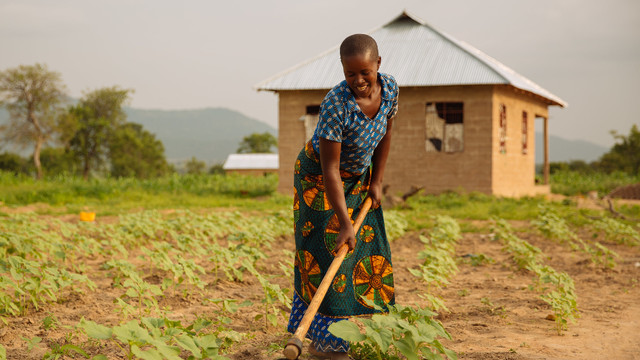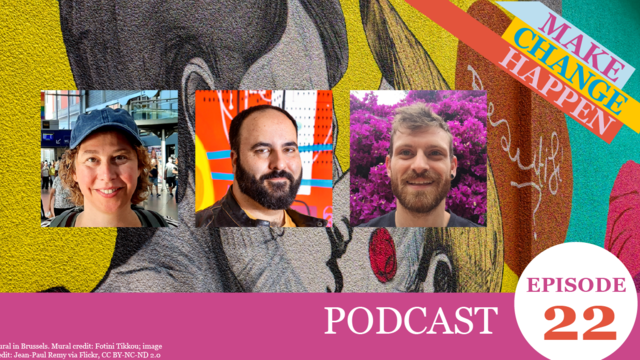Q&A: Successful social mobilisation for land rights in Nepal
Jagat Basnet, a seasoned land rights campaigner, continues our blog and interview series exploring how social movements can support climate justice and interact with sustainable development organisations.
As an advocacy, research and policy analyst with (and formerly executive director of) the Community Self-Reliance Centre, Jagat Basnet has long-supported women and men in rural Nepal to harness their ‘people power’.
 Known as ‘CSRC’, this Nepalese NGO supports landless or land-poor women and men to exercise their basic rights, including access to land. CSRC is helping people to enact real change in their lives and ultimately it seeks to eradicate poverty and injustice.
Known as ‘CSRC’, this Nepalese NGO supports landless or land-poor women and men to exercise their basic rights, including access to land. CSRC is helping people to enact real change in their lives and ultimately it seeks to eradicate poverty and injustice.
Jagat is also an alumnus of IIED’s 2019 Communications Learning Week, a space where project partners join IIED communications staff to explore challenges, opportunities and best practice.
Q: CSRC began as a regional organisation supporting rural people to access education, organise, and generate income before evolving into a national movement for land reform. You know the history well; how did the work with social movements begin?
JB: The word ‘self-reliance’ is key to our meaning: the organisation evolved from the community to empower the community to achieve structural change.
CSRC was first established with young schoolteachers. We began with an integrated programme covering education, organisation and livelihoods. Then, in seeking to enhance livelihoods, we started to question land rights and structural change.
We carried out mapping that showed more than 60% of peasants (PDF) were tenants. They were tilling their landlord’s land, deprived of the tenancy rights that they were legally allowed to claim.
So CSRC began to run ‘legal camps’ in rural areas, empowering tenants to file their cases at the District Land Reform Office. But to make the application, tenants needed a recommendation letter from the then-Village Development Committee (VDC), the chairs of which were landlords and reluctant to comply in the areas where CSRC was working.
To get past this behaviour, tenants organised and encircled the District Development Council meeting. This was an annual meeting of the District Development Committee, which all VDC chairs take part in. So CSRC brought the people together and then the situation itself helped to mobilise them to act.
Q: When you visited IIED last year, you told us about an action in which women took to the streets to effect change when more formal processes failed them. Can you tell us about that protest?
JB: There are two pieces of context for this story. First, the word used for rural peasant in Nepal is ‘kishan’, which actually means ‘male peasant’. In reality, most of Nepal’s farming work is done by women. But despite contributing more than 60% of agricultural labour, 80% of women are denied land ownership rights.
Second, the last two constitutions, of 1962 and 1990, had neither promised nor delivered land reform. The elite continued to own and distribute land to their supporters, as they historically always had, overlooking the working people, including the women.
By the time of the next constitution drafting period – which ran from 2008 to 2015 – poor rural women wanted change. In 2011, 1,000 women travelled to Kathmandu and encircled the Constitutional Assembly building. They demanded land reform on behalf of women and all poor peasants, including smallholders.

Women and men demanding more land rights in Nepal (Photo: copyright International Land Coalition)
The protestors set up tents in open theatre style called ‘Thudikhel’ (meaning ‘open space’), and used their collective power to invite many parliament members, politicians, CSO representatives and the media.
The women received much solidarity and support. The government and political parties were compelled to ensure women were granted land rights in the next constitution, including tax rebates when transferring land from men to women.
Q: Now that CSRC is a well-established national NGO and member of the International Land Coalition, do you still use protest tactics or support social action? Is this compatible with being an organisation that attracts major funders and works with the Nepalese government?
JB: CSRC believes in a rights-based approach and in non-violent social movements. In our experience, there are no changes to policy and practice without the mobilisation of rural workers.
So, to achieve policy change and see it implemented, CSRC empowers the peasants to organise; it is then their own ground-up non-violent mobilisation that pressures the government to act on land rights.
Those funders who believe in a rights-based approach and in non-violence social mobilisation will support CSRC and land rights campaigns. But to generate grassroots power, it is important that local people feel ownership.
So, in addition to other funding sources, CSRC receives around 30% of its resources from the peasants we work with, in cash or kind. We call this the 'campaign fund'.
Fundamentally, we believe that power respects power. In Nepal, if CSRC generates power on the ground, the government will engage in dialogue and negotiation. Without people power, the government does not listen.
Q: Do you feel any benefit from the global climate movement – the global school strikes and other activism? Could climate campaigners’ messages or actions better support your agenda?
JB: CSRC receives funding support from international organisations, such as ActionAid, IIED, CARE, the International Land Coalition, the Asian NGO Coalition for Agrarian Reform and Rural Development (ANGOC), Oxfam and the Danida Human Rights and Good Governance Advisory Unit (Danida HUGOU). But this is for our land rights work. The climate change agenda is not yet integrated with land rights movement of Nepal.
But peasants' wellbeing is clearly linked with climate change. In rural Nepal, people are already suffering from the effects; there are floods, droughts and landslides. So CSRC is trying to link the climate change agenda with the land rights movement.
Q: What would you say to climate activists about the links between land rights and climate issues?
JB: For me, the land reform agenda is linked with climate change – both are related to the suffering of smallholders and peasants.
Right now, the two movements are working separately. As a land rights activist, I feel strongly that we must fight collectively.
Q: Finally, what lessons might today’s climate movement take from CSRC’s journey?
JB: The first lesson is that without people's organisation and non-violent mobilisation, there is no change in policy and practice.
Second, to achieve those changes, the power must be generated from the ground up, which is only possible when working with rural people and their organisations.
Third, when you put forward your question or request, be ready with alternatives and be ready to negotiate.
Fourth, a strong alliance between the climate and land rights movements is needed, with joint action points that both will fight for.
Fifth, the issue of inclusion in each movement is important; women's participation and positioning is important.
With thanks to Jagat Basnet and CSRC.



